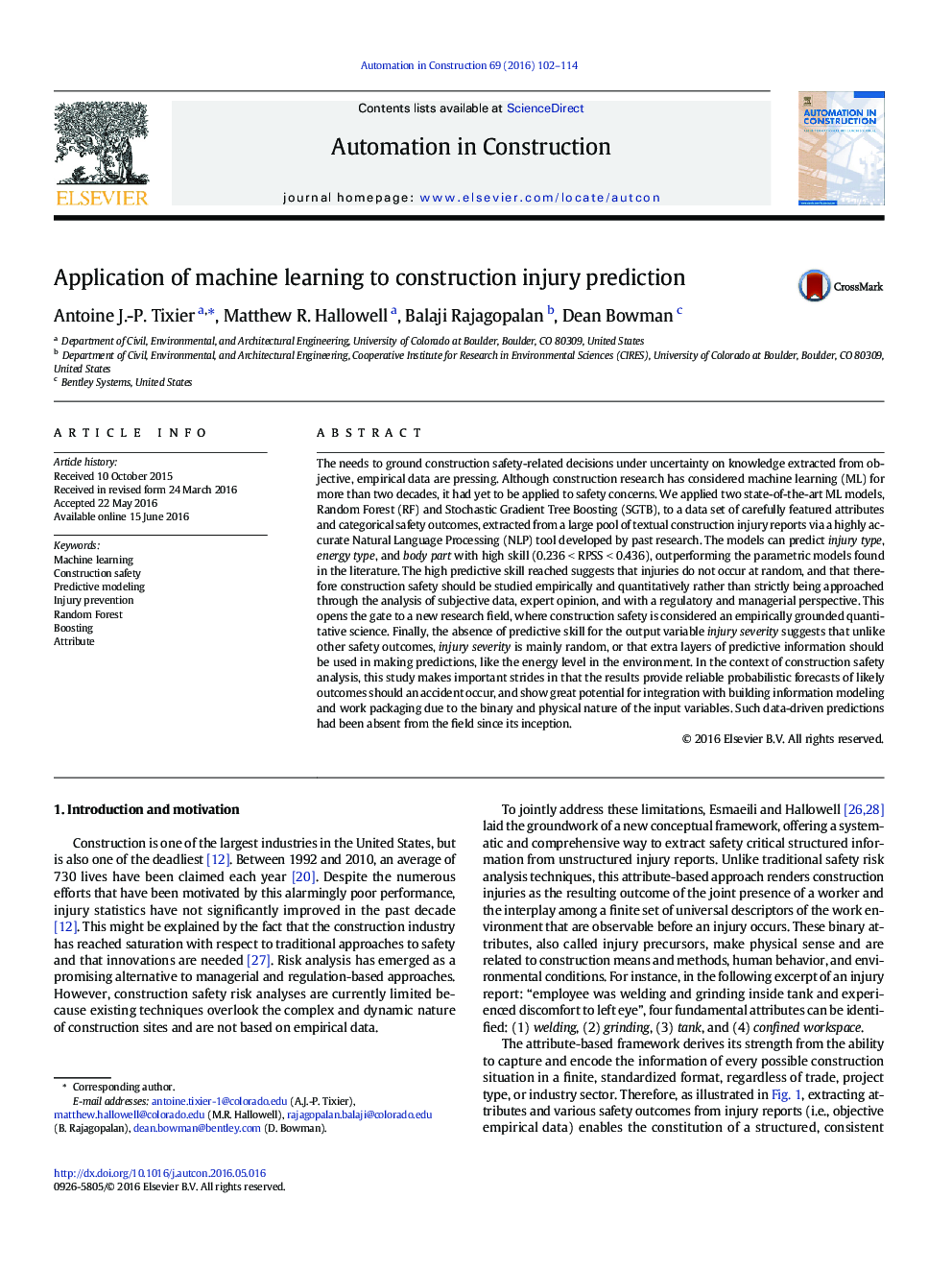| کد مقاله | کد نشریه | سال انتشار | مقاله انگلیسی | نسخه تمام متن |
|---|---|---|---|---|
| 246216 | 502351 | 2016 | 13 صفحه PDF | دانلود رایگان |
• Machine learning algorithms were trained on attribute and outcome data.
• The high predictive skill reached shows that injuries do not occur at random.
• Construction safety should thus be studied empirically and quantitatively.
The needs to ground construction safety-related decisions under uncertainty on knowledge extracted from objective, empirical data are pressing. Although construction research has considered machine learning (ML) for more than two decades, it had yet to be applied to safety concerns. We applied two state-of-the-art ML models, Random Forest (RF) and Stochastic Gradient Tree Boosting (SGTB), to a data set of carefully featured attributes and categorical safety outcomes, extracted from a large pool of textual construction injury reports via a highly accurate Natural Language Processing (NLP) tool developed by past research. The models can predict injury type, energy type, and body part with high skill (0.236 < RPSS < 0.436), outperforming the parametric models found in the literature. The high predictive skill reached suggests that injuries do not occur at random, and that therefore construction safety should be studied empirically and quantitatively rather than strictly being approached through the analysis of subjective data, expert opinion, and with a regulatory and managerial perspective. This opens the gate to a new research field, where construction safety is considered an empirically grounded quantitative science. Finally, the absence of predictive skill for the output variable injury severity suggests that unlike other safety outcomes, injury severity is mainly random, or that extra layers of predictive information should be used in making predictions, like the energy level in the environment. In the context of construction safety analysis, this study makes important strides in that the results provide reliable probabilistic forecasts of likely outcomes should an accident occur, and show great potential for integration with building information modeling and work packaging due to the binary and physical nature of the input variables. Such data-driven predictions had been absent from the field since its inception.
Journal: Automation in Construction - Volume 69, September 2016, Pages 102–114
